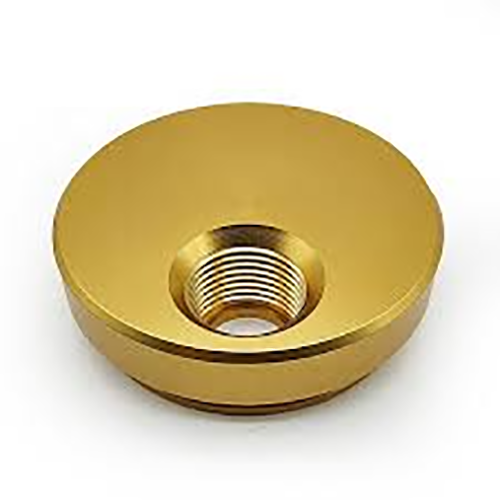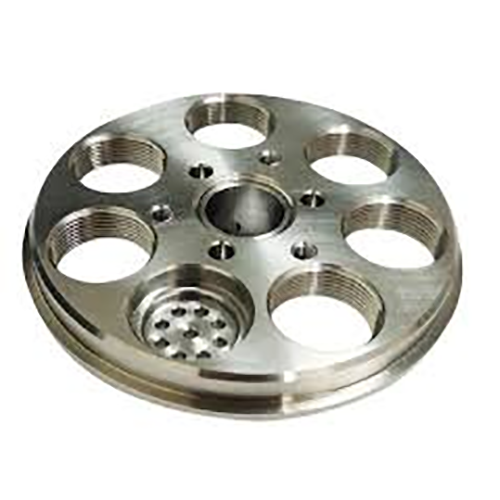
Attaining target exterior polish for a CNC part is of paramount importance.
- Surface finish callouts in engineering drawings provide the exact specifications for the finish of a part
- Engineers often specify Ra (average roughness) to numerically define surface irregularity
- Knowing how to read finish callouts is critical for meeting performance goals
- Designated finish alters fluid film formation, friction levels, and durability outcomes
- Precise decoding of callouts secures the specified finishing outcome
CNC Machining — Precision Engineering Explained

Automated machining signifies a significant manufacturing innovation through automated code the equipment produces detailed patterns with tight tolerances.
- CNC systems permit manufacture of precise components from diverse substrates
- Machine flexibility renders it suitable for medical device and electronics manufacturing
- CNC machining delivers exceptional repeatability ensuring identical parts across production runs
Across prototyping through full-scale production CNC machining serves as a cornerstone in contemporary manufacturing
Interpreting CNC Specifications
Navigating specification tables often appears formidable at first sight
Yet armed with basic knowledge and methodical steps you can manage technical specifications
Open by noting essential values: spindle speed, feeds, accuracy, envelope, control type
Every spec plays a role in determining machine performance.
Illustratively, greater spindle rpm aligns with softer workpieces; increased feed raises manufacturing pace.
Recognizing these ties supports choosing machines suited to target production
Remember to consult the manufacturer's literature thoroughly.
Supplier manuals often give critical context and define technical language
What You Should Know About CNC Machines
Automated CNC platforms are computer-commanded systems for precision manufacturing of multiple materials They interpret CNC code instructions to command cutting tools and motion.
- Frequent CNC varieties include mills, lathes, routers, plasma cutting machines
- Cutting methods suit steels, plastics, woods, and layered composites
- Plus CNC technology provides rapid prototype cycles and limited manufacturing for small firms and research units
Computer Numerical Control Machines: An Overview
They embody an integration of hardware accuracy and advanced software regulation Adaptive tools rely on coded programs to manufacture from simple elements to detailed structures Key principle turns electronic models into physical artifacts.
- Numerical control manufacturing
- Programmed manufacturing process
It includes exact tool motions driven by CNC instructions Engineers contribute by setting machining variables, overseeing runs, and assuring product standards.
Why Surface Finish Matters in CNC Machining
Attaining target texture in CNC processes is critical It modifies operational efficiency and cosmetic finish Substrate properties, machining variables, and post-process methods shape surface outcome.
Refined surfaces boost longevity; rough surfaces can diminish functional performance Automated machining presents a spectrum of techniques and tools to accomplish desired finishes.
- By using distinct cutter geometries |high-speed steels|spindle rpm choices to produce target surface
- Additionally finishing processes including polishing and grinding refine texture
Knowing parameter-to-finish links is vital to secure the best results.
CNC Overview: From Use to Application
Precision production uses machine control software to shape parts from different material classes They interpret digital toolpaths to carve detailed designs reliably Comprehending toolpaths, G-code, and tooling strategies supports effective machining
CNC serves diverse fields including aerospace, automotive, manufacturing, and electronics From complex aerospace components to precise injection molds, CNC is essential for complex parts
Notation for Surface Finish on Machined Parts
Appropriate surface specification is essential during CNC part production It ensures that the final product meets the requirements for function and aesthetics Drawings usually depict finish requirements with Ra roughness values The value, shown in µm or inches, quantifies mean surface irregularity height.
Weigh required surface smoothness against intended use when defining callouts

In many cases fine finishes are necessary for accurate alignment and tight interfaces
Textured surfaces may be selected to improve grip or frictional engagement
Use explicit finish instructions on design documents to convey the surface requirement State the Ra figure and any extra machining or finishing instructions required.
Understand that effective surface annotations are critical to production success
Types of CNC Machines and Their Capabilities
Machine shops deploy varied CNC equipment tailored to many distinct production tasks They adopt CAD-to-CAM pipelines to steer cutting tools for precise part manufacture.
- Drilling units excel at producing holes and axial features in parts
- Routers handle flat panel cutting and profiling for non-metal workpieces
- Waterjet cutters use high-pressure abrasive streams to cut diverse materials without thermal effects
Machine selection is dictated by workpiece material, geometric complexity, and precision demands Machine-specific strengths enable applications in fields ranging from aerospace to automotive engineering.
Securing Optimal Finish Using CNC Machining
Realizing premium surface texture is vital and CNC machining supplies tools to accomplish it With deliberate feed-speed-tool strategies professionals steer cutting dynamics to achieve smoother surfaces In addition top-grade tooling and adequate lubrication help generate finer surfaces Selecting appropriate cutting approaches and detailed machine calibration yields high-quality surfaces.
Securing Surface Finish Through CNC Programming
Programming mastery of surface parameters is essential for desired outcomes Machining parameter combos such as feed, rpm, and tool geometry set the surface characteristics Conscientious parameter tuning with sound coolant strategy produces excellent surface quality.
- In addition periodic tool servicing and checks secure consistent surface quality Moreover scheduled tool maintenance and what is acnc machines inspection preserve surface performance Besides that systematic tool upkeep and monitoring ensure sustained surface quality
- For better finishes evaluate substrate, roughness goal, and functional context
- Toolpath simulation enables testing parameter impacts to cut down surface errors
- Plus regular inspection and maintenance of tools copyright finishing standards
